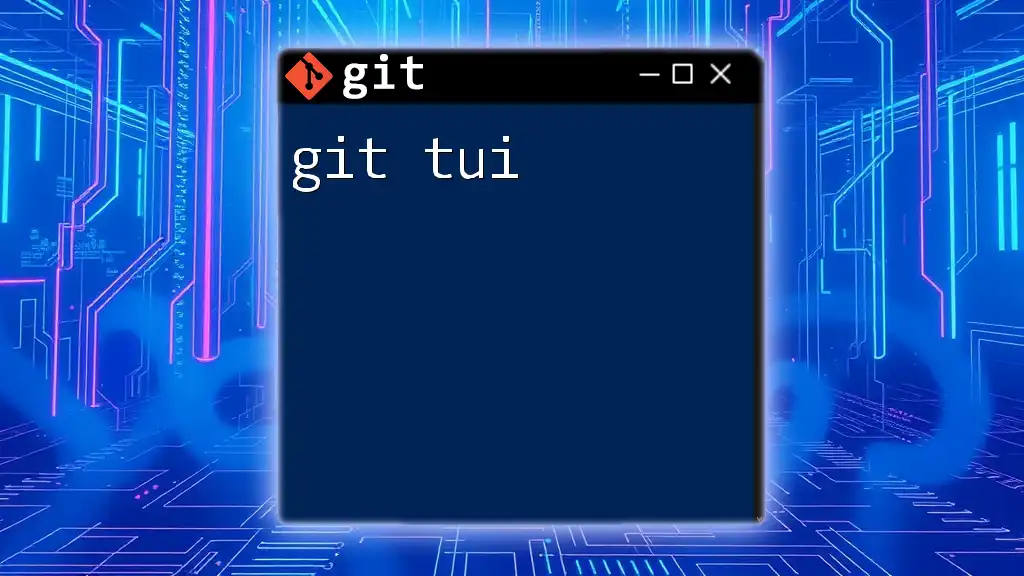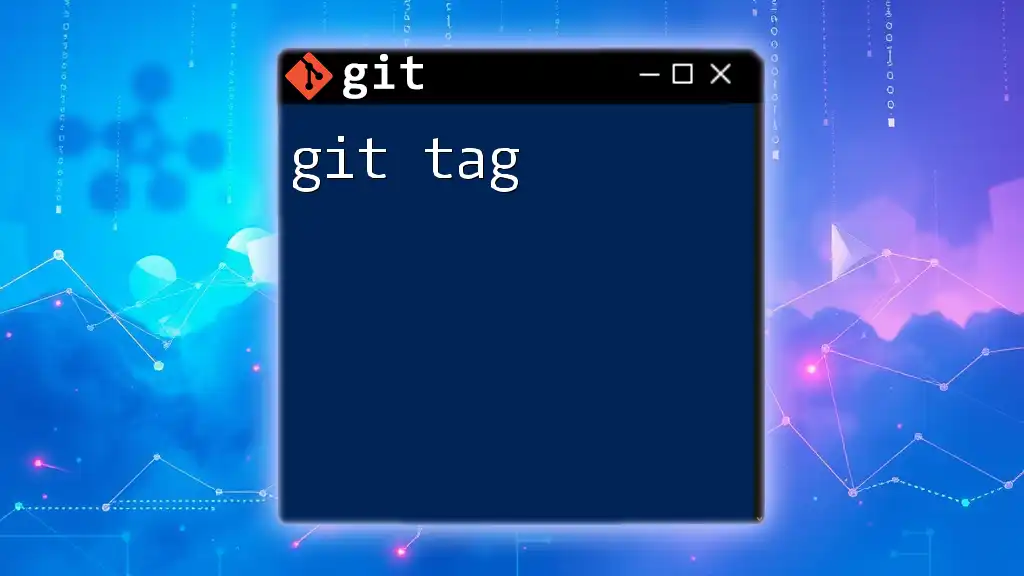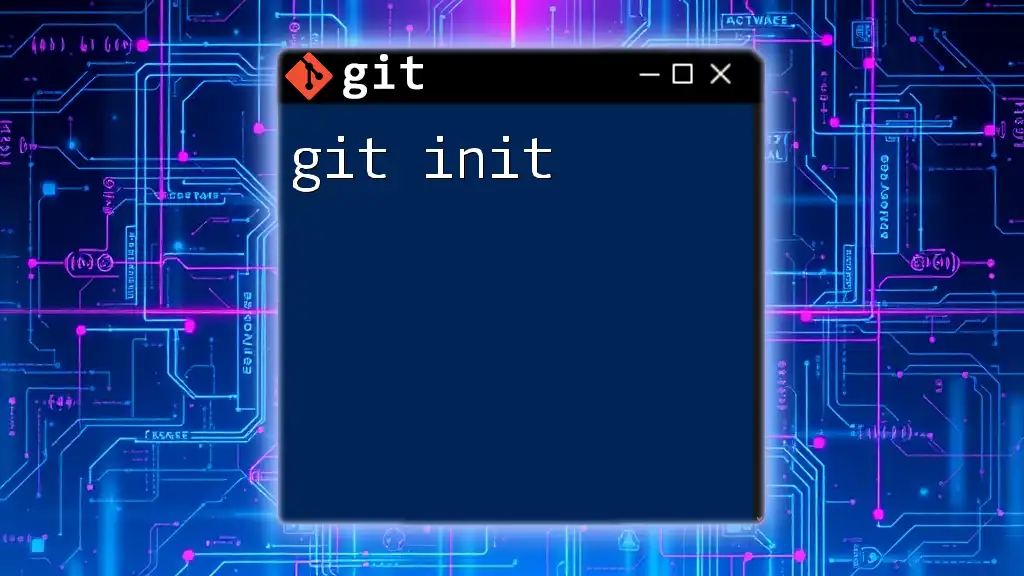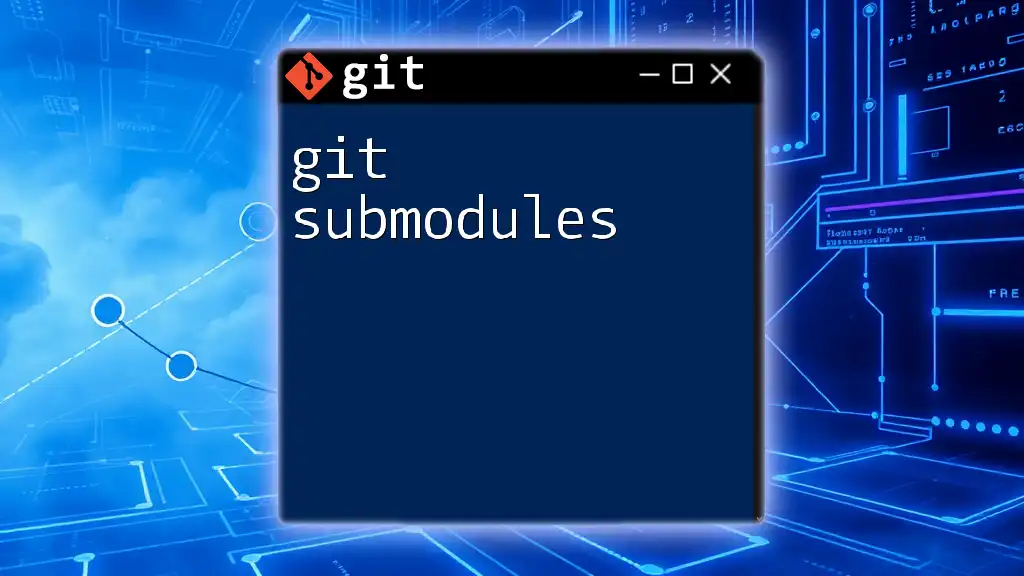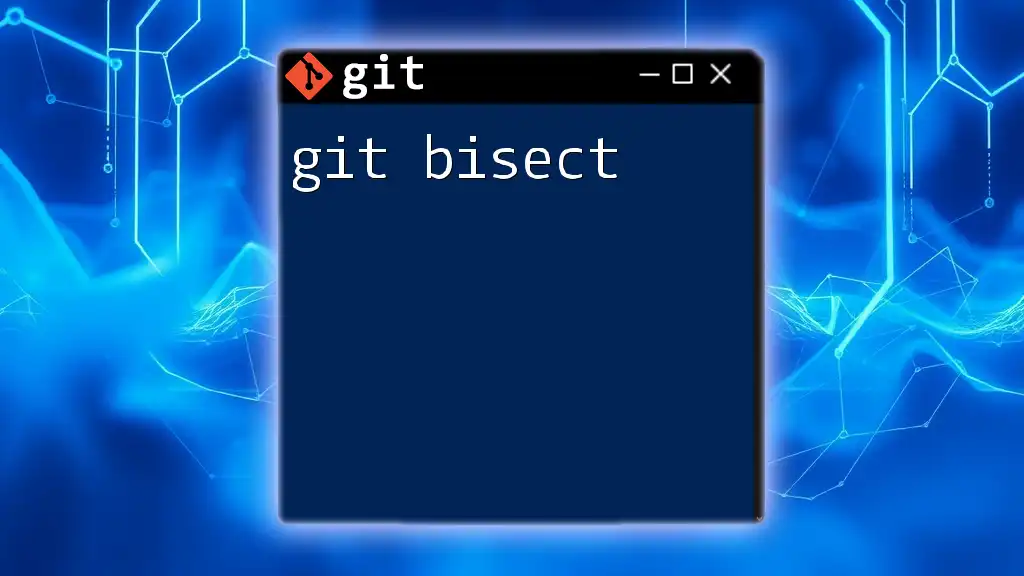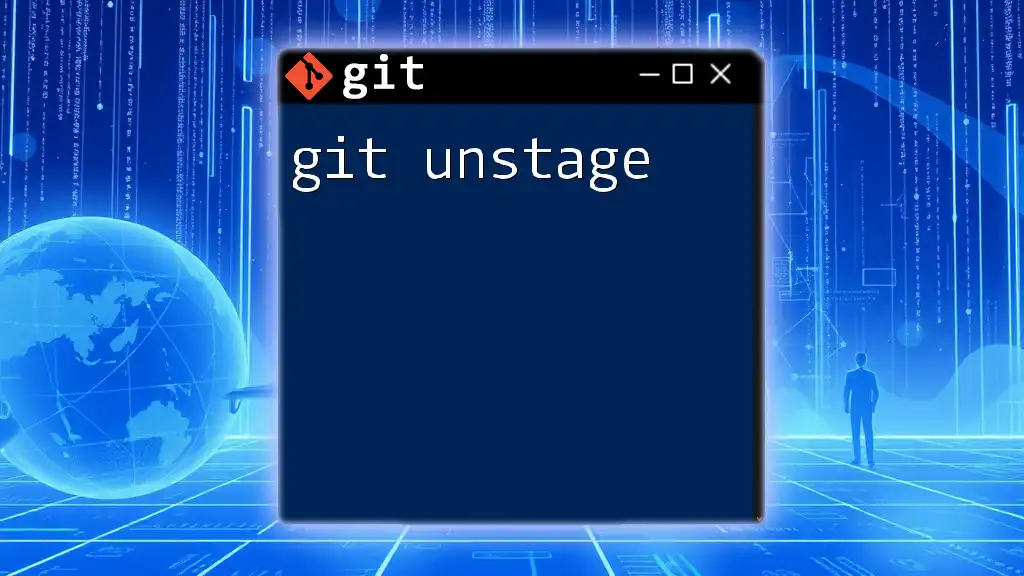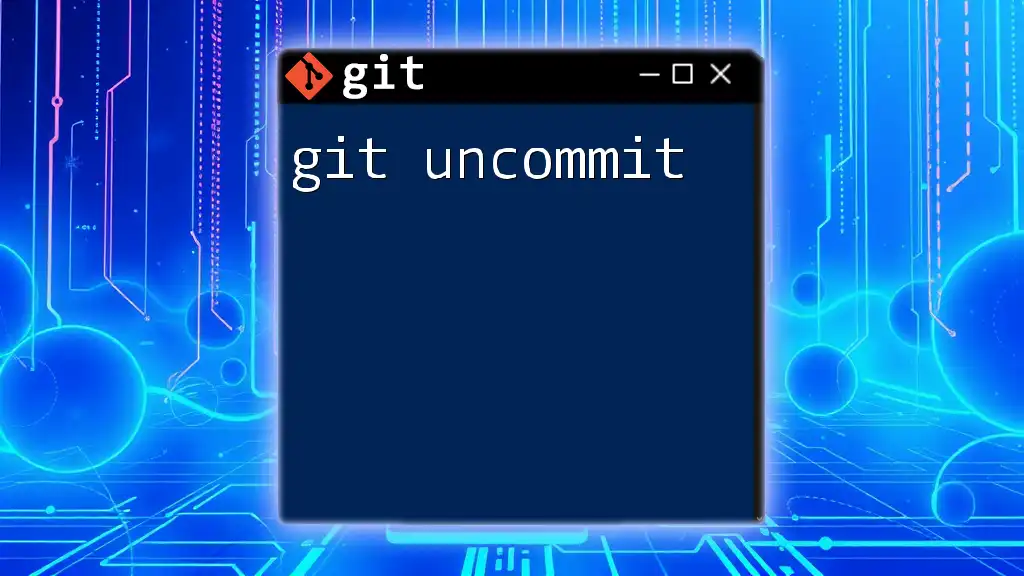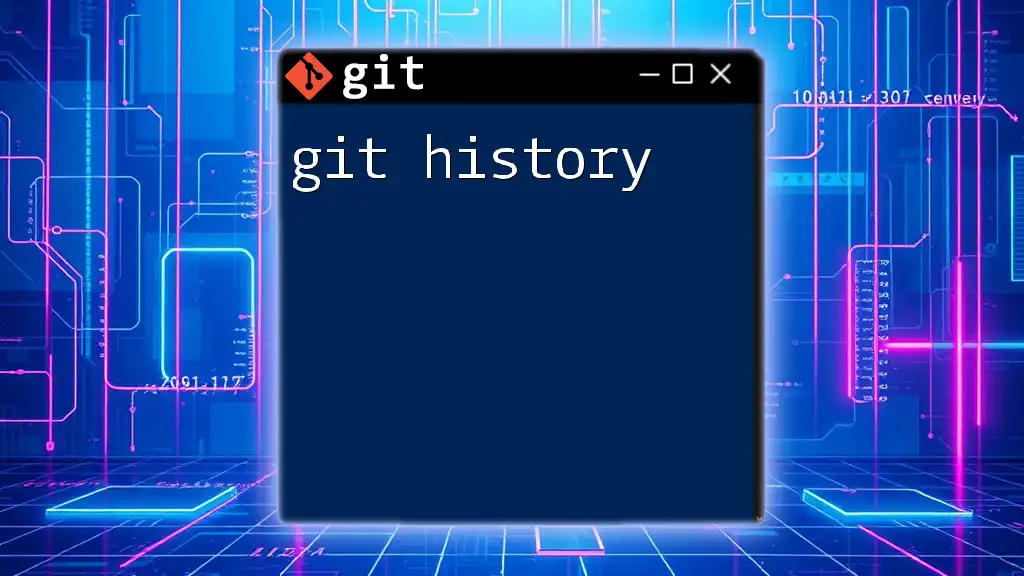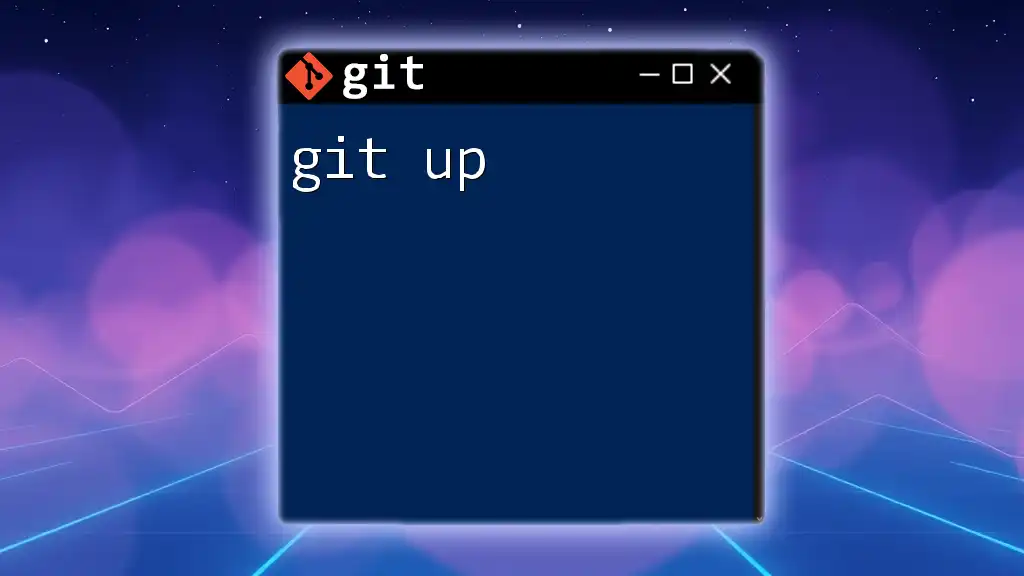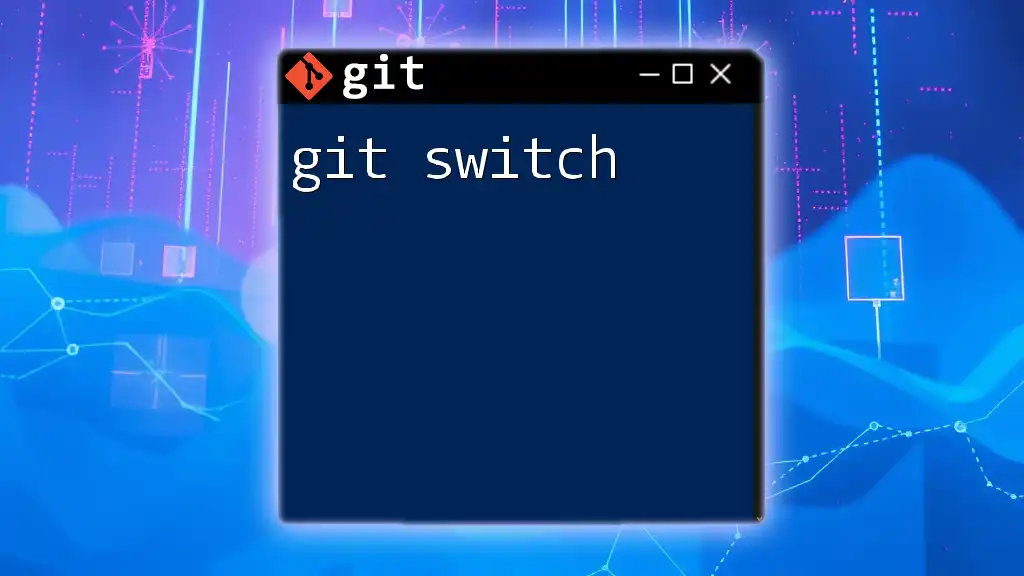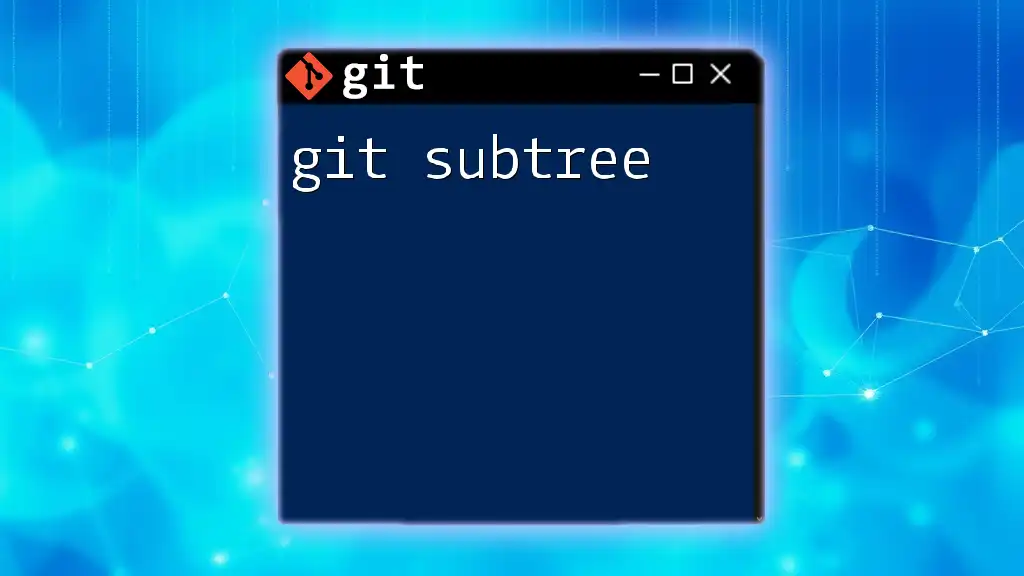Git TUI (Text User Interface) is an interactive terminal-based interface that simplifies the process of using Git commands, allowing users to manage repositories visually within the command line.
Here's a basic example of how to start a Git TUI using `gitui`:
gitui
What is Git TUI?
Git TUI—short for Git Text User Interface—is an elegant solution that offers users a streamlined way to interact with Git repositories through a text-based interface. Unlike traditional Graphical User Interfaces (GUIs), Git TUI provides a more efficient method of executing commands without leaving the terminal. This approach can be especially advantageous for developers who prefer keyboard shortcuts to mouse clicks, as it allows for faster navigation and command execution.
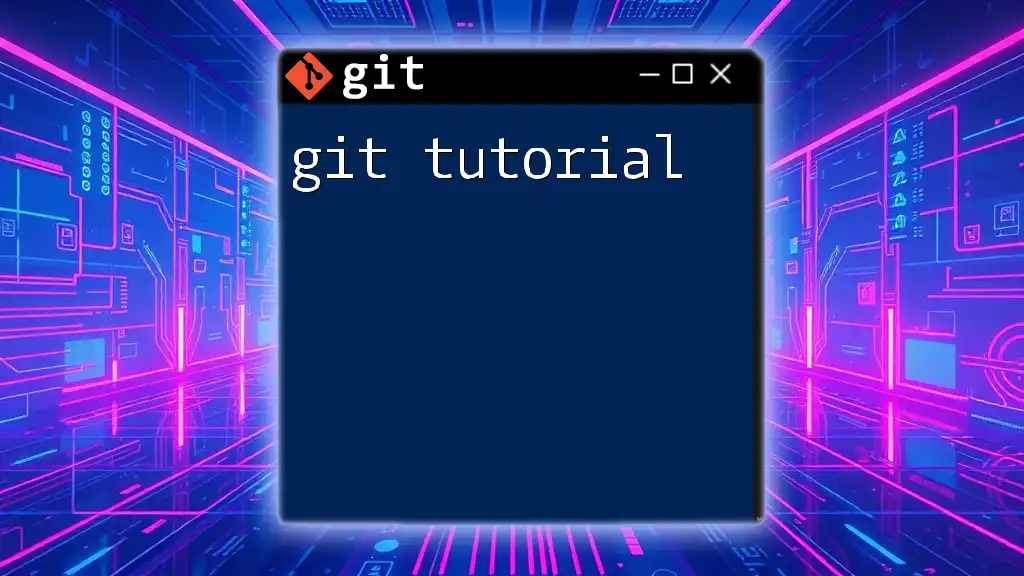
Why Use Git TUI?
Using Git TUI comes with a host of benefits:
- Efficiency: Performing actions through the keyboard can significantly speed up workflow.
- Resource-friendly: TUI applications typically require fewer system resources compared to GUIs, making them a perfect option for low-end machines or environments with limited graphical capabilities.
- Focus on Code: With a simplified interface, you can concentrate more on coding and less on navigating through intricate graphical interfaces.
Use Cases: Git TUI is particularly useful in scenarios like server management, remote coding, and pair programming, where a lightweight and performant interface is highly desirable.
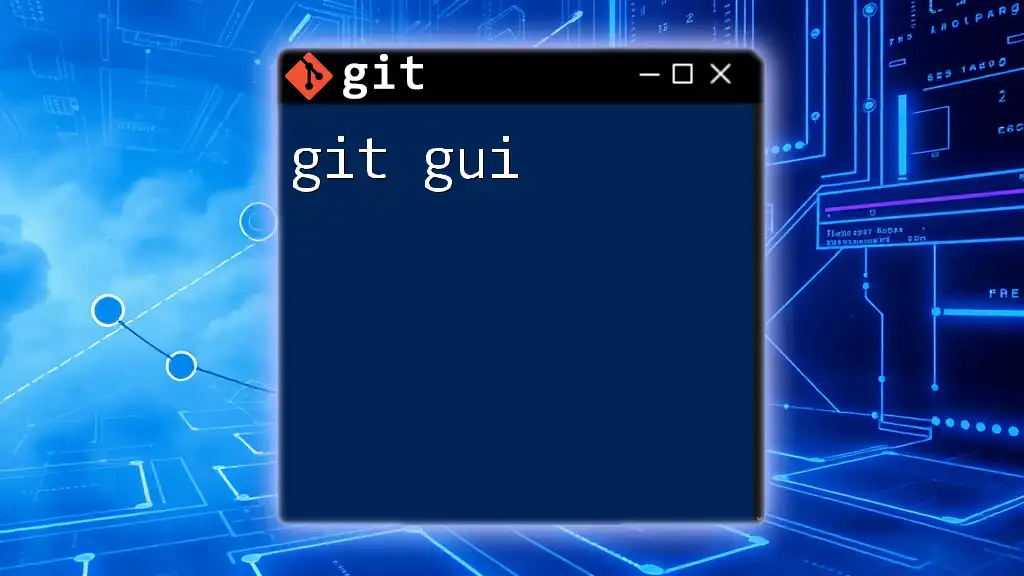
Setting Up Git TUI
System Requirements
Before diving into Git TUI, ensure that you have Git installed on your machine along with a compatible terminal. Git TUI is designed to work across various platforms, including macOS, Linux, and Windows, but make sure your terminal supports TUI applications.
Installing Git TUI
Installing Git TUI varies by operating system. Follow these straightforward steps based on your platform.
For macOS, you can install Git TUI using Homebrew with the following command:
brew install git-tui
For Ubuntu, simply execute:
sudo apt install git-tui
If you are on Windows, consider using Windows Subsystem for Linux (WSL) or other terminal emulators that support Linux commands to install Git TUI.
Starting Git TUI
Once installed, launching Git TUI is simple. Open your terminal and use the command:
git tui
This command will render the Git TUI interface right in your terminal window.
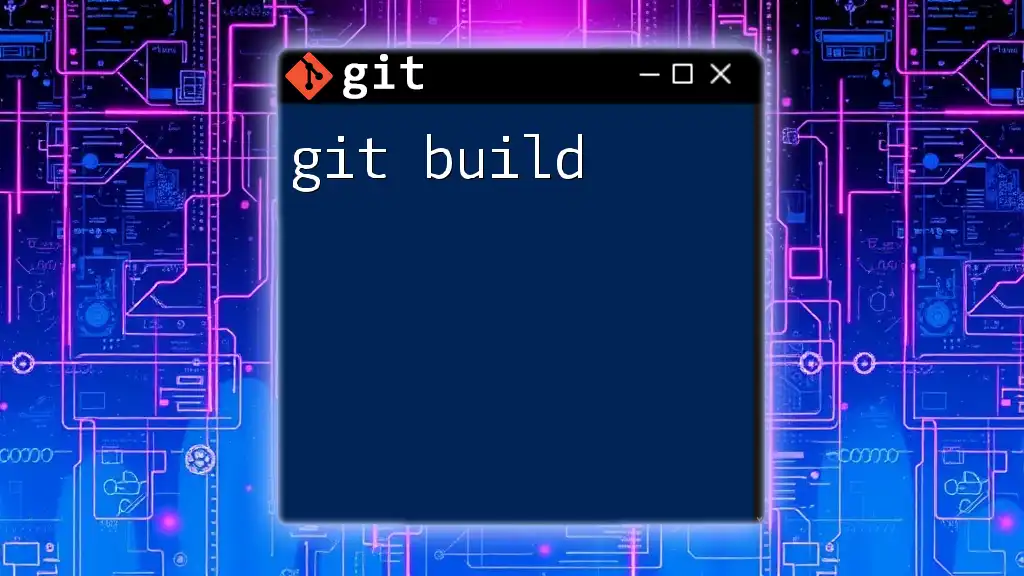
Navigating Git TUI
Overview of the Interface
Git TUI’s layout is designed for clarity and effectiveness. The interface consists of several key components:
- Header: Displays the current branch name, along with other vital status indicators.
- Status View: Shows tracked, untracked, and staged files, enabling users to quickly assess the state of the repository.
- Repository View: A comprehensive outline of your repository structure, allowing for easy navigation among branches and commits.
Basic Navigation Commands
Navigating Git TUI is intuitive, especially for users familiar with keyboard shortcuts. The arrow keys allow you to move between files, while Enter can select options. Additional shortcuts enhance your interaction:
- Press 's': Stage files.
- Press 'u': Unstage files.
- Press 'c': Open the commit message editor.
For instance, if you want to navigate to a specific file and stage it, simply use the arrow keys to highlight the file, then press ‘s’.
Key Features of Git TUI
Viewing Git Status
One of the main features of Git TUI is its ability to provide a clear overview of the repository's status. You'll immediately see which branch you're on and the state of your working directory.
For example, you might see output resembling the following:
On branch main
Changes to be committed:
(use "git restore --staged <file>..." to unstage)
modified: README.md
This clarity allows you to quickly make decisions regarding which changes to stage or commit.
Staging and Unstaging Changes
Staging and unstaging changes becomes a breeze in Git TUI. To stage files, navigate to the file you wish to stage and press ‘s’. Conversely, to unstage a file, highlight the staged file and hit ‘u’.
Committing Changes
Committing in Git TUI mirrors the command line but with the added benefit of an interface that keeps you organized. When you are ready to commit, press ‘c’ to open the commit message editor. It’s essential to provide meaningful commit messages as they help in tracking project history effectively.
Commit message: Fix typo in README
Branch Management
Managing branches in Git TUI couldn't be easier. You can create a new branch directly from the interface. Focus on the branch section, press ‘n’ to create a new branch, and follow the prompts to name your branch. Switching between branches requires a simple selection and pressing Enter.
Viewing Logs
Accessing the commit log is streamlined in Git TUI. By selecting the log view, you're presented with a chronological list of commits where you can filter and search for specific commits. Using the command:
git log --oneline
offers a concise view of all commit messages, making navigation through history effortless.
Pulling and Pushing Changes
To keep your local repository in sync with the remote repository, Git TUI simplifies the pull and push process. Using the interface, you can execute these commands with a few keystrokes. When ready, simply press the pertinent keys to either pull changes from or push commits to your remote repository.
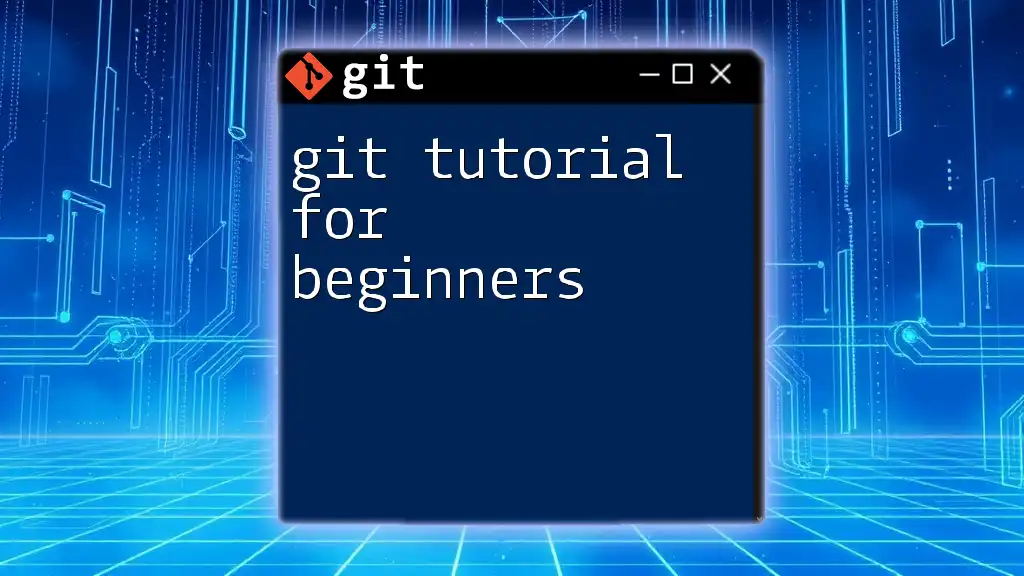
Advanced Git TUI Techniques
Merging Branches
Merging through Git TUI is quite efficient. When you want to merge one branch into another, select the branch you want to merge and press the appropriate merge command. In scenarios involving conflicts, Git TUI will visually highlight the conflicting elements, enabling you to resolve them with guided prompts.
Git Aliases in TUI
To further streamline your workflow, you can create aliases for frequently used commands in Git TUI. Aliases allow you to shorten long command sequences, enhancing your efficiency.
For example, instead of typing a complete command, you might set up an alias like so:
git config --global alias.co checkout
This enables you to quickly switch branches using:
git co branch-name
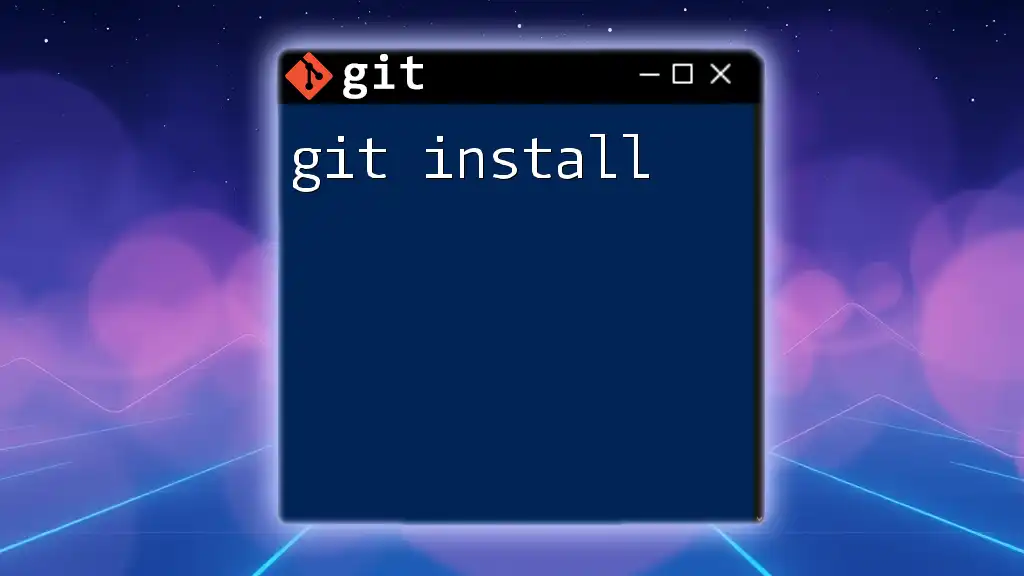
Troubleshooting Common Issues
Common Errors in Git TUI
Occasionally, you may encounter errors while using Git TUI. Common issues might involve problems with repository access or conflicts during merges. In such cases, if you receive an error message, it’s usually a sign to check your network connection or the repository permissions.
Resources for Learning More
For continued learning, refer to the official Git documentation and community forums. Engaging with groups on platforms like GitHub and Stack Overflow can also provide valuable insights and tips from experienced users.
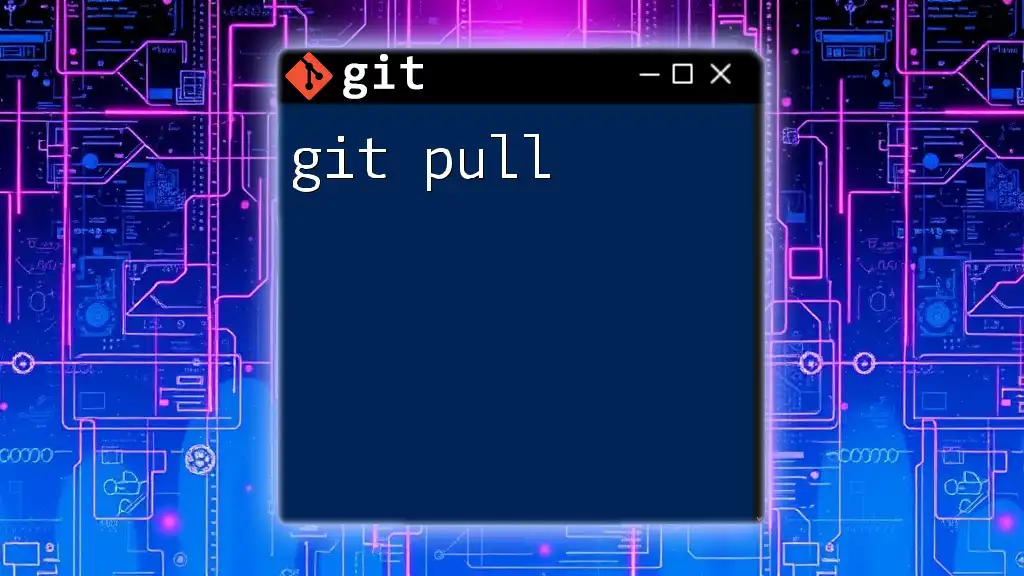
Conclusion
Git TUI offers an efficient and user-friendly environment for managing Git repositories directly from the terminal. Its vast range of features, including staging, committing, and branch management, enhances the Git experience while promoting productivity.
As you delve deeper into Git TUI, you'll find it becomes an invaluable tool in your development toolkit, encouraging a hands-on approach to version control.
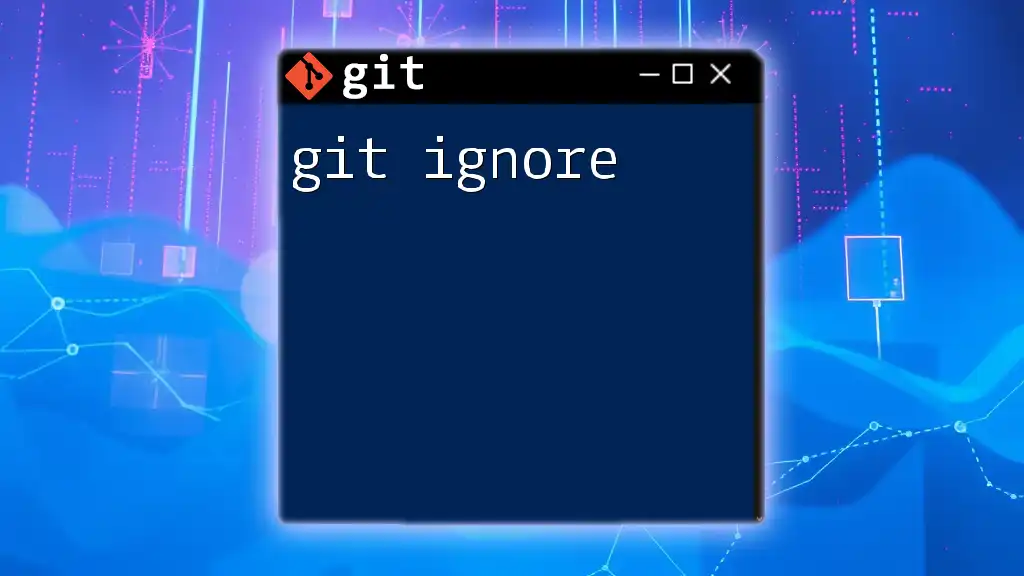
Call to Action
To further enrich your Git learning experience, explore the additional resources available online. We also invite you to join our community, where you can participate in discussions, share tips, and enroll in specialized courses to master Git and Git TUI!
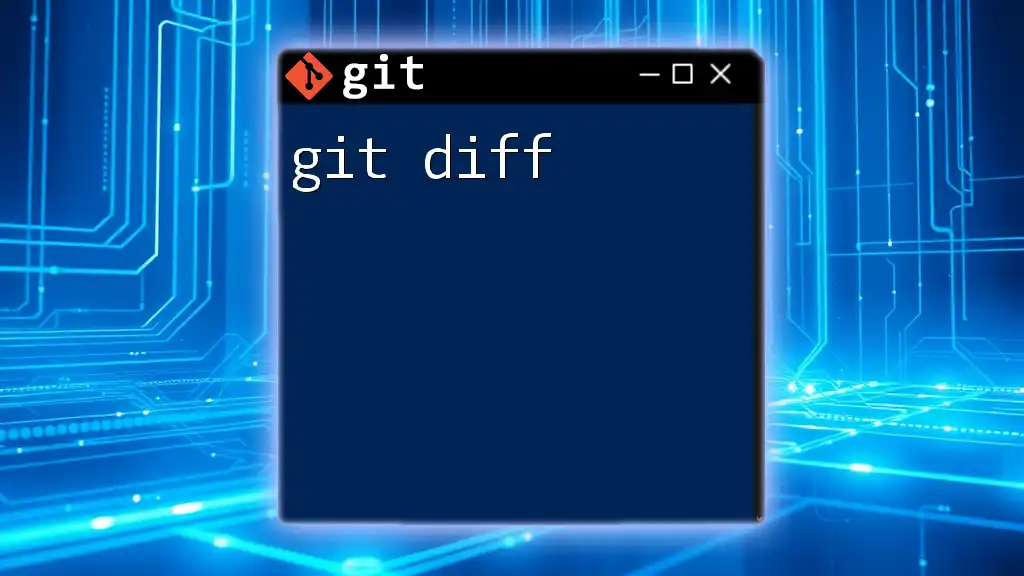
Appendices
Glossary of Terms
- TUI: Text User Interface, an environment for interaction through text-based commands.
- Branch: A parallel version of the repository.
- Commit: A snapshot of the repository at a specific point in time.
Additional Code Snippets
For your convenience, here are a few handy commands you might find useful while using Git TUI:
git status # Check the status of your repo
git checkout branch-name # Switch branches
git push origin main # Push changes to remote main branch
Armed with this guide, you'll navigate Git TUI with confidence and make the most of your version control experience!

